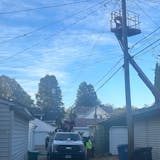Police across the nation are going Hollywood, but in Minnesota, don't expect to get invited to a screening any time soon.
A bill setting policy on police body cameras is likely to land on Gov. Mark Dayton's desk any day. If he signs it, the state will squander the promise of bodycams to improve public trust in police.
It will also send citizens a message: Keep making your own video when you see cops on the street.
Because only in rare circumstances will you ever see what's captured on police bodycams.
The bodycam bill passed with the full-throated support of law enforcement lobbyists but over the objections of transparency advocates, including the Minnesota Coalition on Government Information (on whose board I serve).
Thanks to pressure on Dayton and lawmakers, particularly from the St. Paul NAACP, the bill improved in a conference committee Friday. Lawmakers removed an absurd distinction that made video public if an officer shoots or injures someone in public, but private if it happens inside a house.
In the revised bill, the public will have access to recordings from body cameras that document police firing a weapon or using force that results in substantial bodily harm. But only once the investigation is over, meaning the police now have the ability to withhold the video for months.
Access to bodycam video has become the most significant open government issue of our time. If cameras are rolling every time an officer responds to a 911 call, all sorts of sticky issues about privacy come up.


